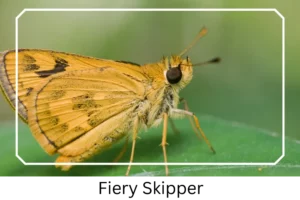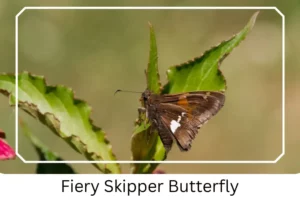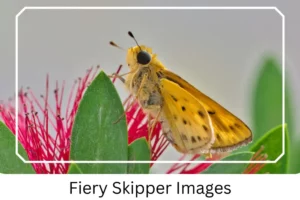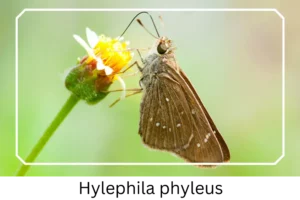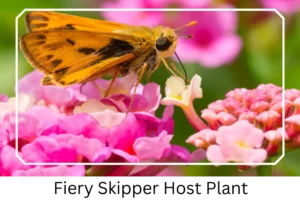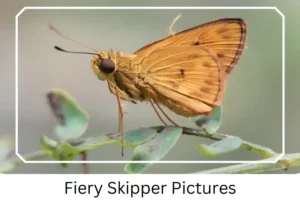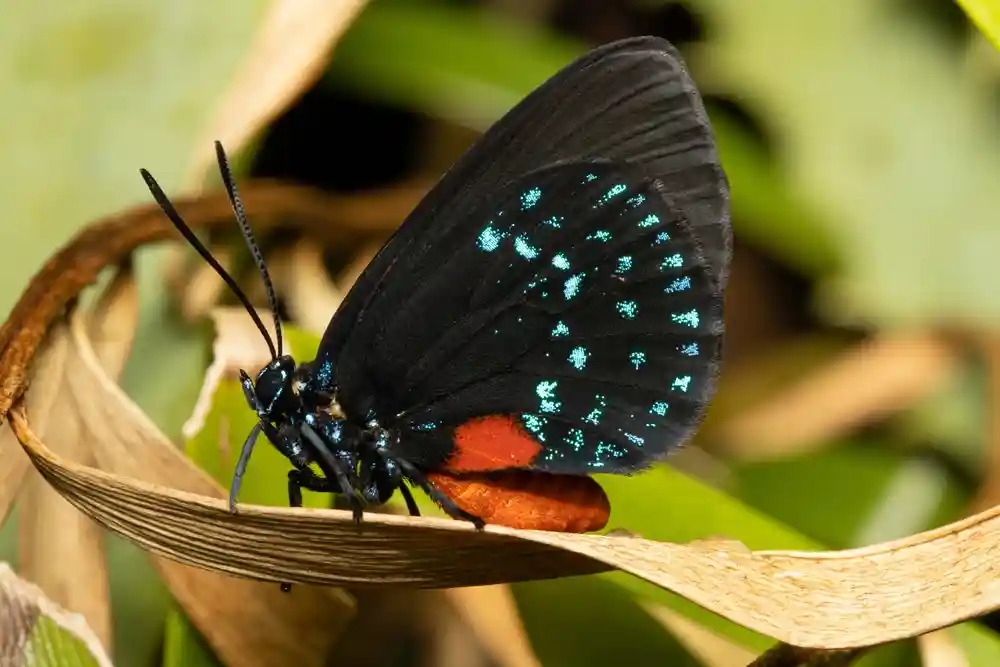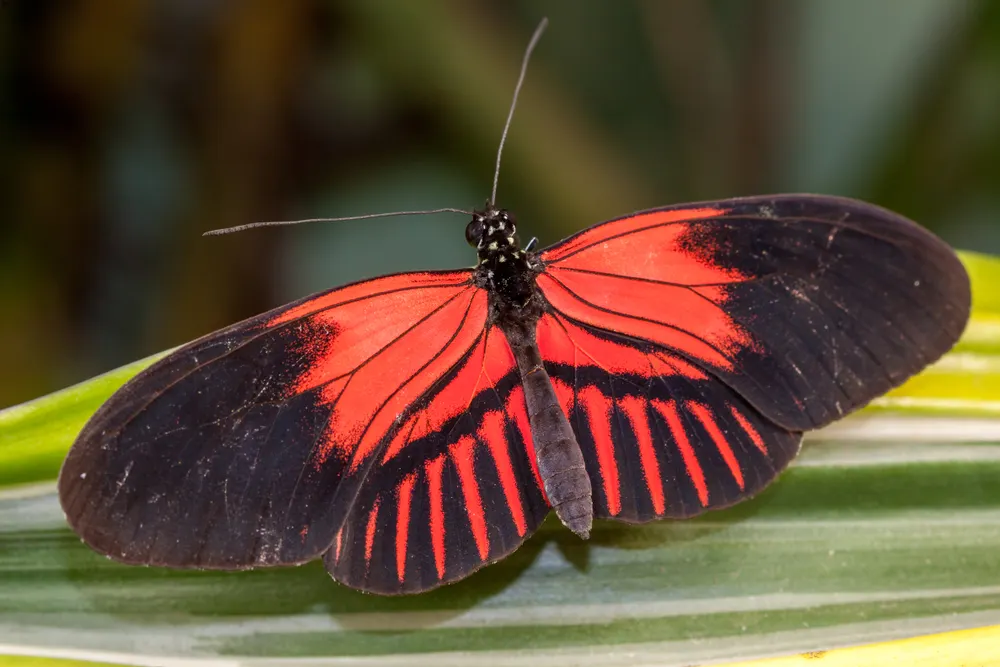Fiery Skipper (Hylephila phyleus)
The Fiery Skipper (Hylephila phyleus) is a fascinating butterfly species known for its vibrant colors and unique behaviors. Found across North and South America, from the chilly climates of Canada to the warm regions of Argentina, this butterfly thrives in a variety of habitats. Despite its widespread presence, the Fiery Skipper often surprises observers with its appearance and mannerisms, leading to a delightful discovery for enthusiasts and casual observers alike.
Scientific Classification
- Family: Hesperiidae
- Genus: Hylephila
- Scientific Name: Hylephila phyleus
Overview
Characterized by its small size and distinctive sitting posture, the Fiery Skipper presents an intriguing study in butterfly behavior and adaptation. This butterfly, often mistaken for having only two wings due to its unique resting position, actually possesses four fully functional wings. The Fiery Skipper’s ability to blend into its surroundings while maintaining a vivid presence through its coloring and patterns makes it a subject of interest for both scientific study and nature observation.
Description and Identification
Caterpillar
The mature larva of the Fiery Skipper measures approximately 0.5 inches in length. It features a white body adorned with black spots and is equipped with long spines for defense. Its head is a striking orange with two prominent black horns, and it sports a distinctive yellow anal plate. Fiery Skipper larvae tend to be solitary or form small groups, rarely exceeding two to three individuals.
Pupa
Transitioning into the pupa stage, the chrysalis exhibits a light brown hue accented with golden spots and is adorned with about ten black spines on its ventral side. The thorax curves distinctly, setting this stage apart in its development, while the antennae are covered in short black spines, hinting at the butterfly’s imminent emergence.
Adult Butterfly
Sexual Dimorphism: This species exhibits clear differences between males and females, not only in behavior but also in physical appearance.
Color and Appearance: Males boast wings that range from orange to yellow, peppered with dark spots, whereas females display a darker base color with spots of yellow to orange. This contrast is especially noticeable when the wings are spread. The closed-wing view offers a subtler version of this pattern, providing a glimpse into the butterfly’s ability to camouflage and signal simultaneously.
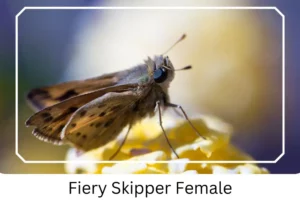
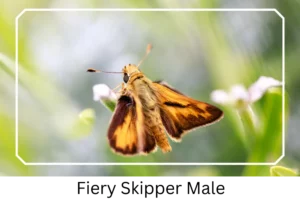 Average Wingspan: The wingspan of the Fiery Skipper falls between 3 cm and 4 cm (1.18 – 1.57 in), making it a small but noticeable presence in its habitat.
Average Wingspan: The wingspan of the Fiery Skipper falls between 3 cm and 4 cm (1.18 – 1.57 in), making it a small but noticeable presence in its habitat.
Flight Pattern: Known for its quick and erratic flight, the Fiery Skipper darts and dashes, making it a challenge to track but a delight to observe.
Eggs
The Fiery Skipper’s eggs are laid individually and are distinguished by their yellow color, marking the beginning of the lifecycle anew.
Quick Facts | |
| Distribution | Spanning from Canada to Argentina across North and South America. |
| Habitat | Prefers dense green vegetation, parks, gardens, roadsides, open fields, and meadows. |
| Lifespan of Adults | Approximately one month. |
| Host Plants | Utilizes various grass species, including Bermuda grass, crabgrass, and St. Augustine grass. |
| Adult Diet | Feeds on nectar from flowers such as thistles, sneezeweed, and asters. |
How to Identify Fiery Skipper?
Identifying a Fiery Skipper involves noting its small size, distinctive flight pattern, and unique wing positioning. Look for butterflies with a wingspan ranging from 1.18 inches to 1.57 inches, exhibiting a fast, haphazard flight. Males typically have brighter orange or yellow wings with dark spots, while females feature a darker base with lighter spots. The triangular wing posture when sitting, unique to skippers, is a key identification feature. Observing these characteristics in environments ranging from dense green vegetation to open meadows will increase your chances of spotting this intriguing species.
Did You Know?
- Fiery Skippers can position their wings in a triangle shape while sitting, a posture believed to aid in solar absorption, unique among their kind.
- The larvae stage of the Fiery Skipper is often considered a pest due to its diet on common grasses, impacting lawns and agricultural areas.
- This species’ adaptability to various climates and habitats contributes to its widespread distribution, making it a common yet fascinating butterfly to encounter.
Conclusion
The Fiery Skipper butterfly, with its vibrant colors, distinctive behaviors, and unique life stages, offers a captivating glimpse into the diversity of the butterfly world. Whether observed fluttering erratically in a garden or basking in the sun, this species continues to intrigue and delight those lucky enough to encounter it. Its presence from the parks of Canada to the fields of Argentina underscores the adaptability and resilience of these small but mighty creatures, making them a cherished subject of study and admiration.

